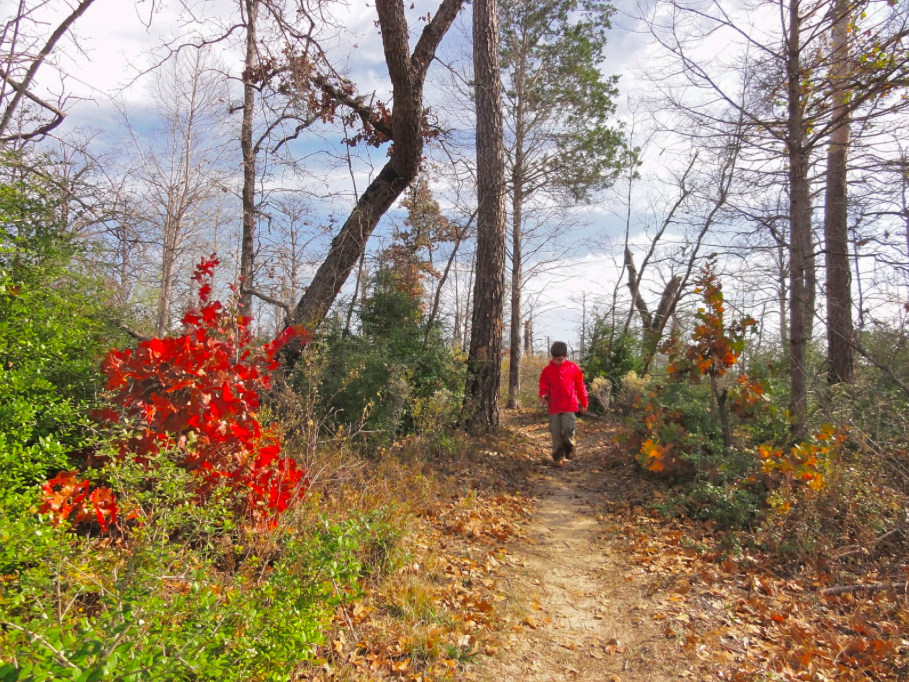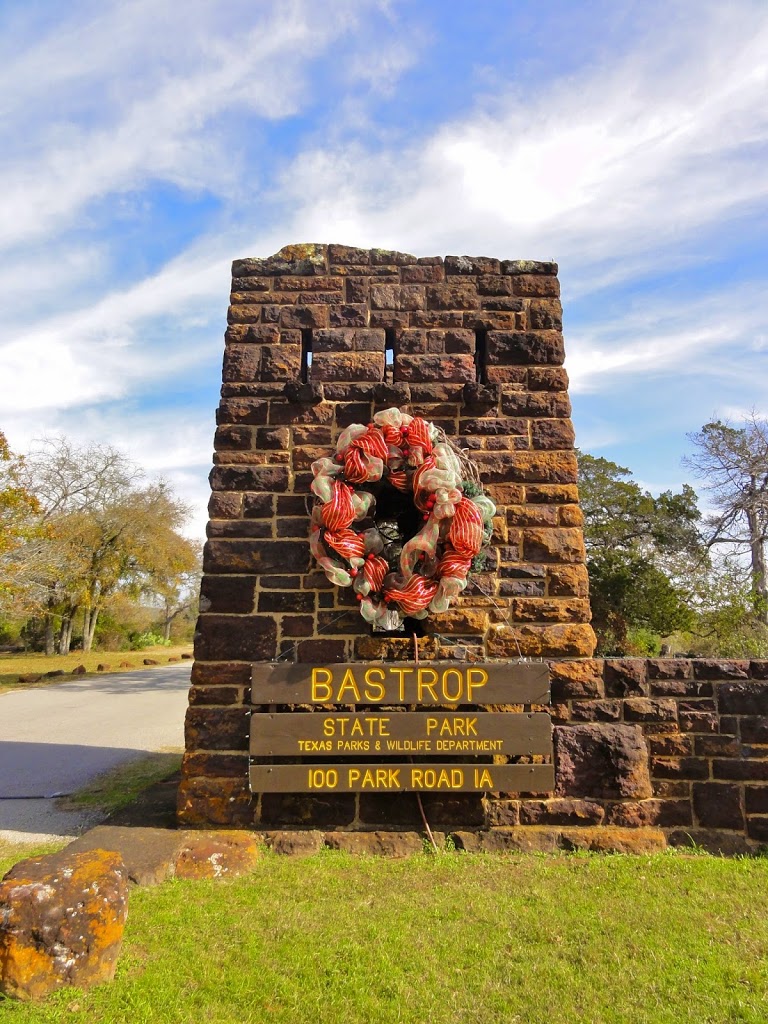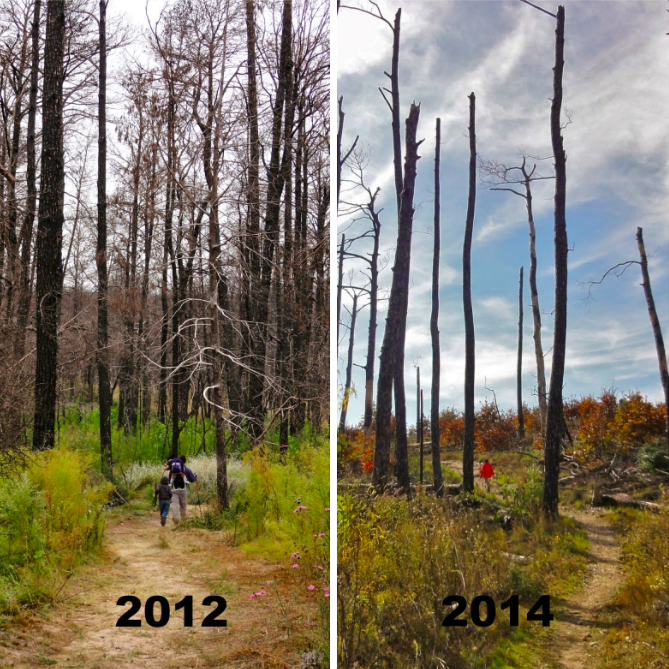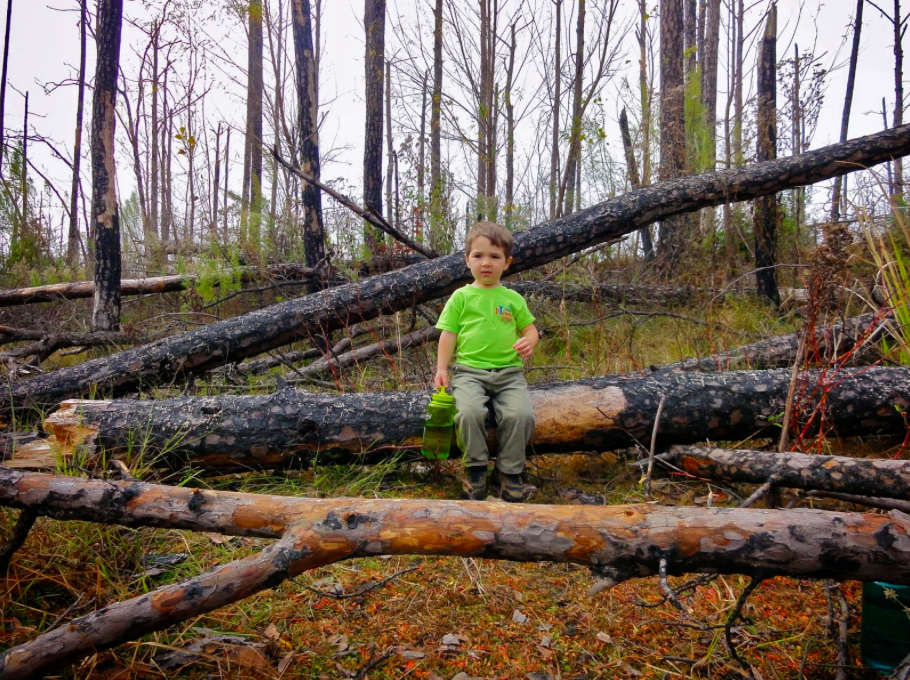I grew up in a house surrounded by dozens of towering pine trees. I have fond memories of the prickles of pine needles on my bare feet, myriad pinecone craft projects and–best of all–the smell. All that to say that I have a special place in my heart for pine trees, which are few and far between in Austin. But did you know that less than an hour southeast of here, in and around Bastrop State Park, lies the westernmost stand of Loblolly pine trees in the United States? Separated from the pineywoods of East Texas by roughly 100 miles, scientists estimate that these genetically unique “Lost Pines” have been in the area for over 18,000 years.
Back in 2011, the Labor Day Wildfires decimated 96% of Bastrop State Park’s 6600 acres, destroyed 1600 homes in the area, and ravaged thousands of these Lost Pines. If that fire has kept you from visiting the park these last few years, it’s time to make the trip. You’ll find a landscape unlike anything you’ve seen before.
My first trip to Bastrop State Park was in October of 2012. Having never visited the park pre-fire, I had no point of reference and no expectations. Even so, I remember thinking how dismal the landscape seemed. The scars from the burn were so fresh that I had a hard time shaking the sadness of what had happened. The park was eerily quiet and we only saw a handful of other visitors while we were there. The only wildlife I remember were ants.
Fast forward two years to my second trip, December of this year… We arrived to find the park headquarters abuzz with families checking in for a night of camping. Cruising through the park, we passed folks fishing and scout troops picnicking. On our hike, we crossed paths with two other families. From the get-go, the human happenings at the park were a lot more lively than I remembered.
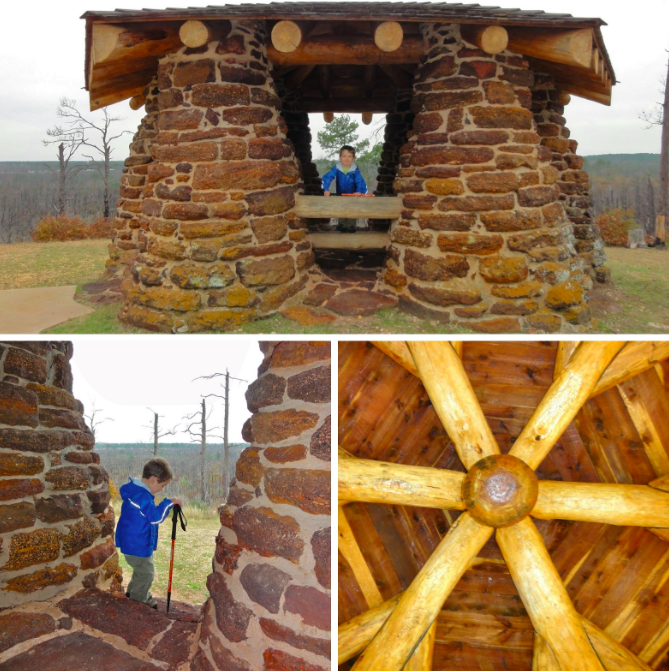 We parked at the Scenic Overlook to begin our hike on the purple trail. My boys made a beeline for the pavilion, one of dozens of structures built in the park by the Civilian Conservation Corps (CCC) in the 1930s. These historic structures–roads, a refectory, cabins, bridges, and more–were painstakingly designed to blend with the surrounding landscape. Incredibly, all of them survived the fires. The pavilion is a fun place to rest or picnic. My boys love peeking through the windows and spinning dizzy circles while staring up at the patterned beams of the roof.
We parked at the Scenic Overlook to begin our hike on the purple trail. My boys made a beeline for the pavilion, one of dozens of structures built in the park by the Civilian Conservation Corps (CCC) in the 1930s. These historic structures–roads, a refectory, cabins, bridges, and more–were painstakingly designed to blend with the surrounding landscape. Incredibly, all of them survived the fires. The pavilion is a fun place to rest or picnic. My boys love peeking through the windows and spinning dizzy circles while staring up at the patterned beams of the roof.
One major change in the landscape between our first and second visits was the number of downed trees. Signs throughout the park cautioned us to WATCH FOR FALLING TREES. Sure enough, within a few yards of the start of our hike, we passed the remains of a recently sawn pine that had been cleared from the path. On our way out, we stopped there and taught the kiddos how to read the rings of a tree. We encountered quite a few downed trees that hadn’t been cleared from the trail yet, so use caution getting around them (and be aware that soot doesn’t wash out of clothing).
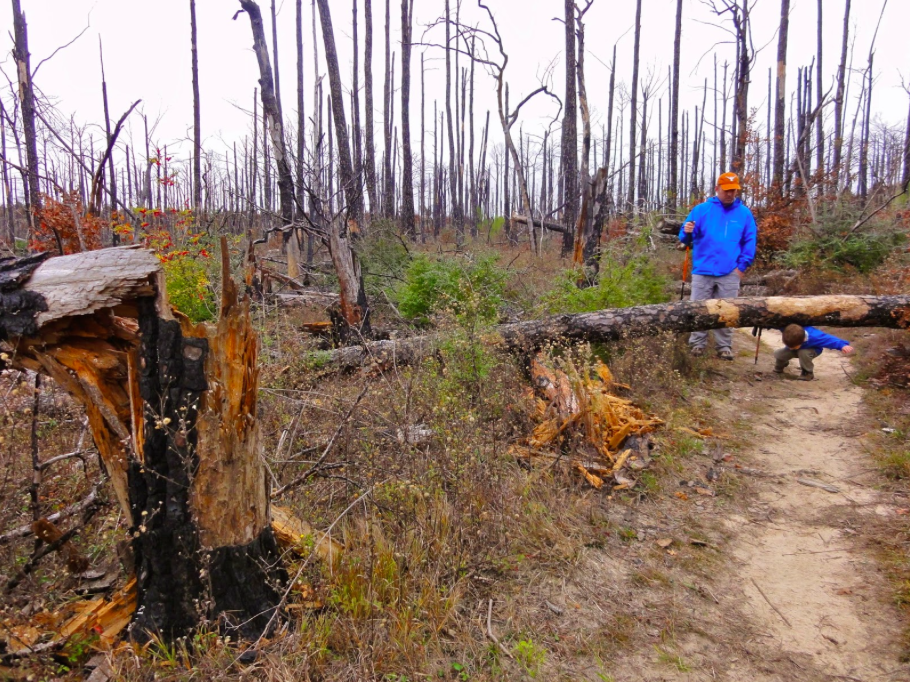 What comes to mind when I try to describe Bastrop State Park in its current condition is that there is beauty in decay. Is this park attractive in the traditional sense? Not so much. But it is undeniably beautiful, especially in light of the changes we saw in just two years. We started down the trail’s initial descent at a pretty brisk clip. Once that first burst of energy wore off and we slowed our pace, what we noticed was amazing. From the decay of the fallen trees on the forest floor has emerged a colorful array of mushrooms. Exquisite patterns of fungi fill crevices in the bark of some of the trees still strong enough to stand. Charred layers of bark are peeling away from the bases of those trees like paper-thin sheets of phyllo dough.
What comes to mind when I try to describe Bastrop State Park in its current condition is that there is beauty in decay. Is this park attractive in the traditional sense? Not so much. But it is undeniably beautiful, especially in light of the changes we saw in just two years. We started down the trail’s initial descent at a pretty brisk clip. Once that first burst of energy wore off and we slowed our pace, what we noticed was amazing. From the decay of the fallen trees on the forest floor has emerged a colorful array of mushrooms. Exquisite patterns of fungi fill crevices in the bark of some of the trees still strong enough to stand. Charred layers of bark are peeling away from the bases of those trees like paper-thin sheets of phyllo dough.
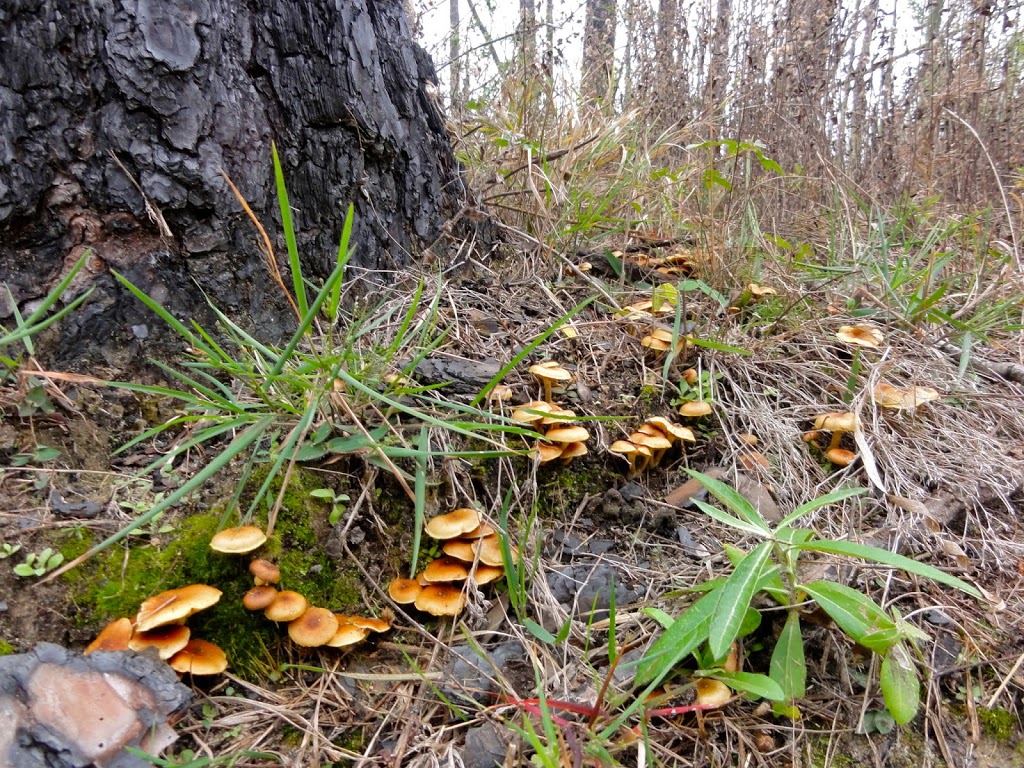

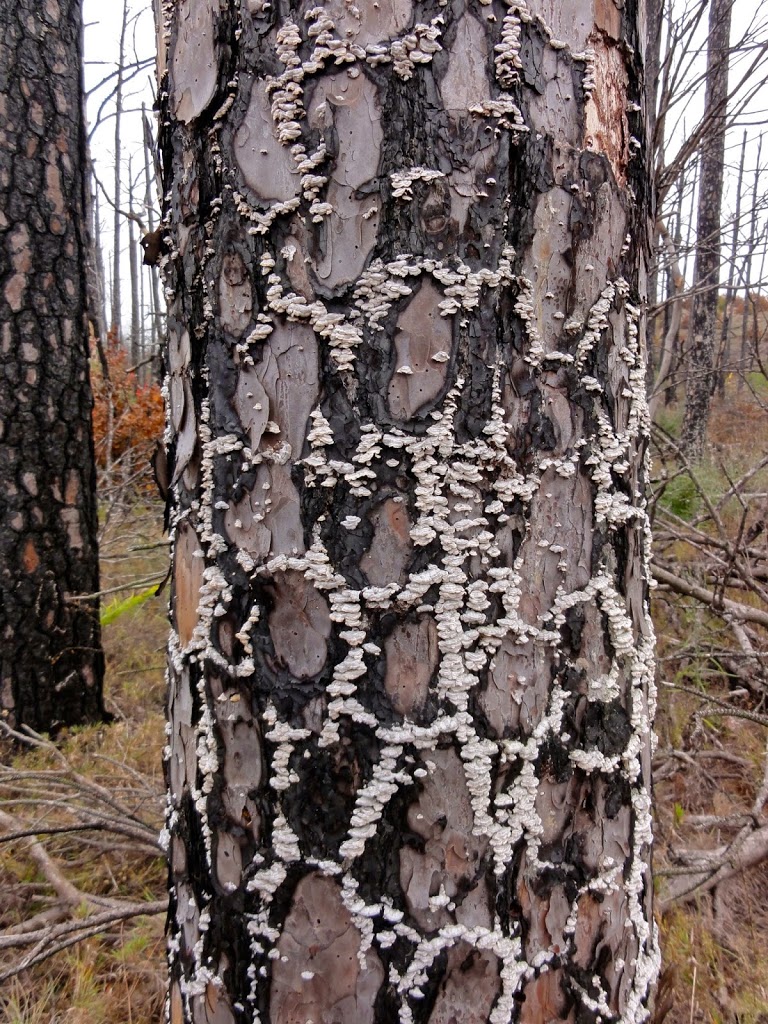
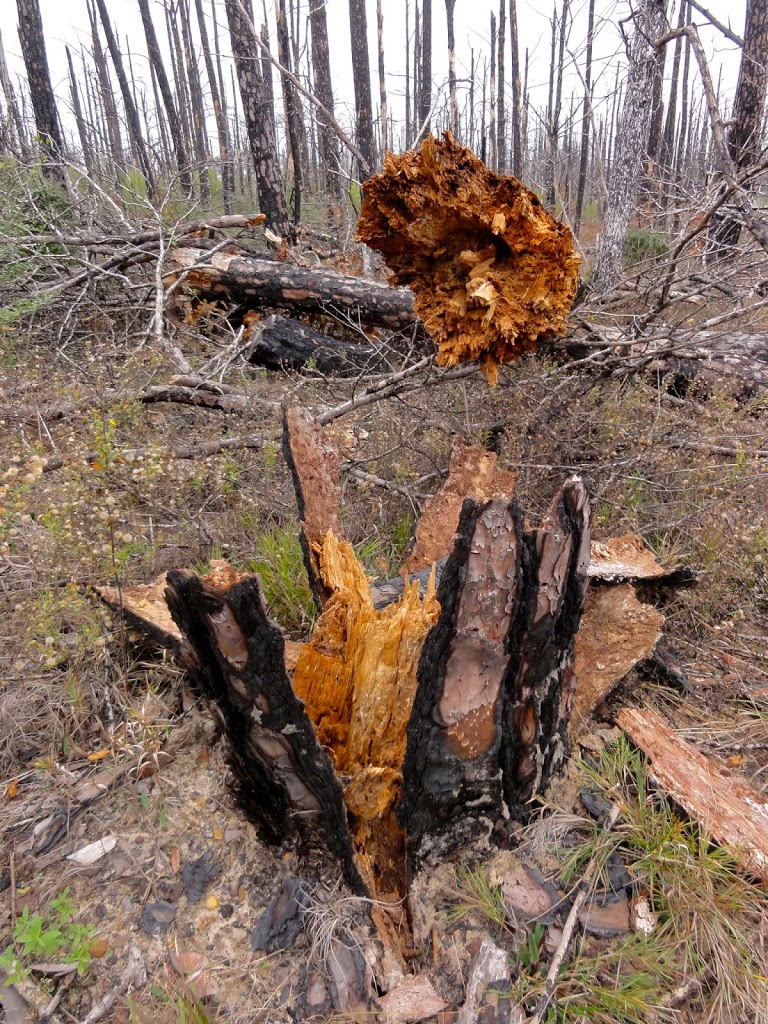
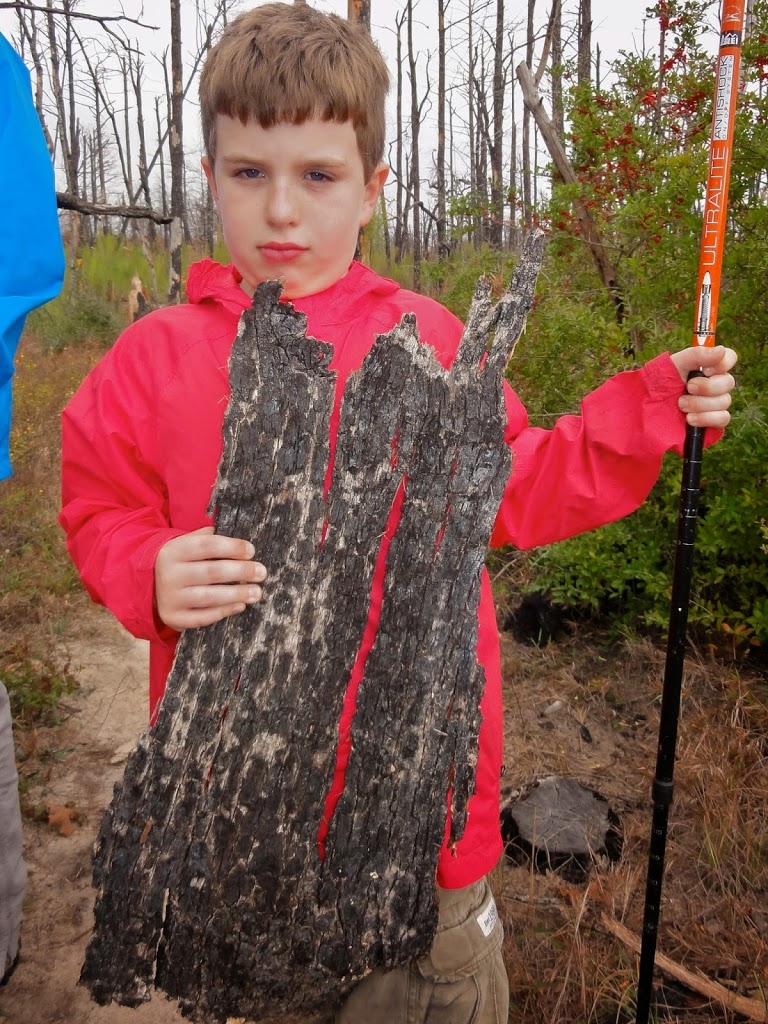

In terms of what’s growing and thriving in the park, we saw wildflowers; caterpillars; small oak trees showing off their fall colors; yaupon holly with their bright red berries; young pine trees stretching a few feet tall; and lots of other grasses and shrubs. Birdwatchers will want to bring their binoculars because we spotted bluebirds, woodpeckers, hawks, and titmice. We paused frequently to watch and marvel at the Texas leaf cutting ants scurrying about, hauling slices of vegetation several times their own size. The sandy trail surface was great for spying animal tracks–deer, raccoons, and possums that we could easily identify. Although we didn’t see or hear any (the males can be heard calling from December-June), it’s worth mentioning that Bastrop State Park is the only remaining state-protected area where the endangered Houston Toad can be found.
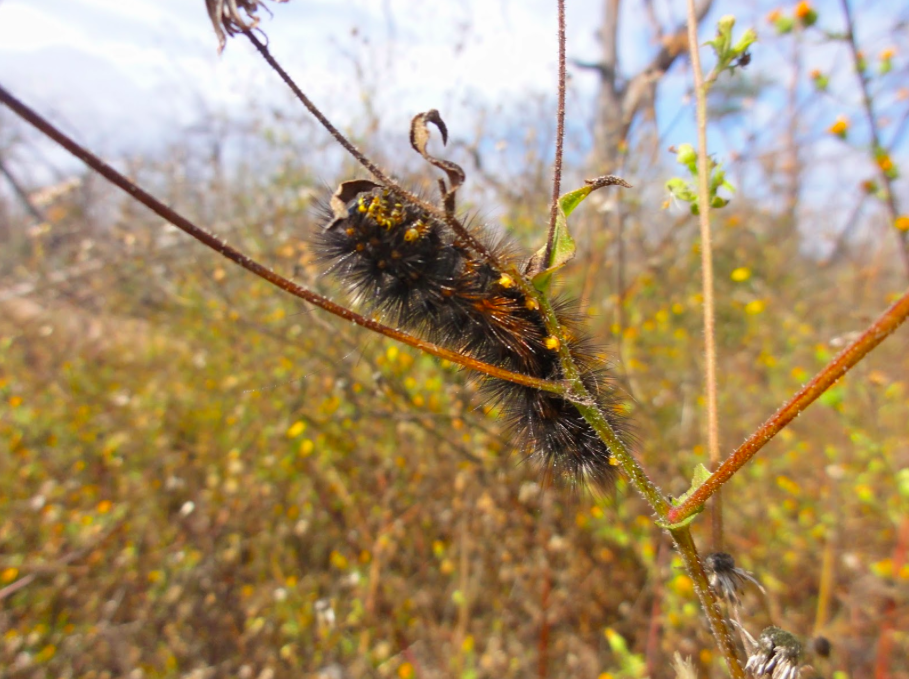
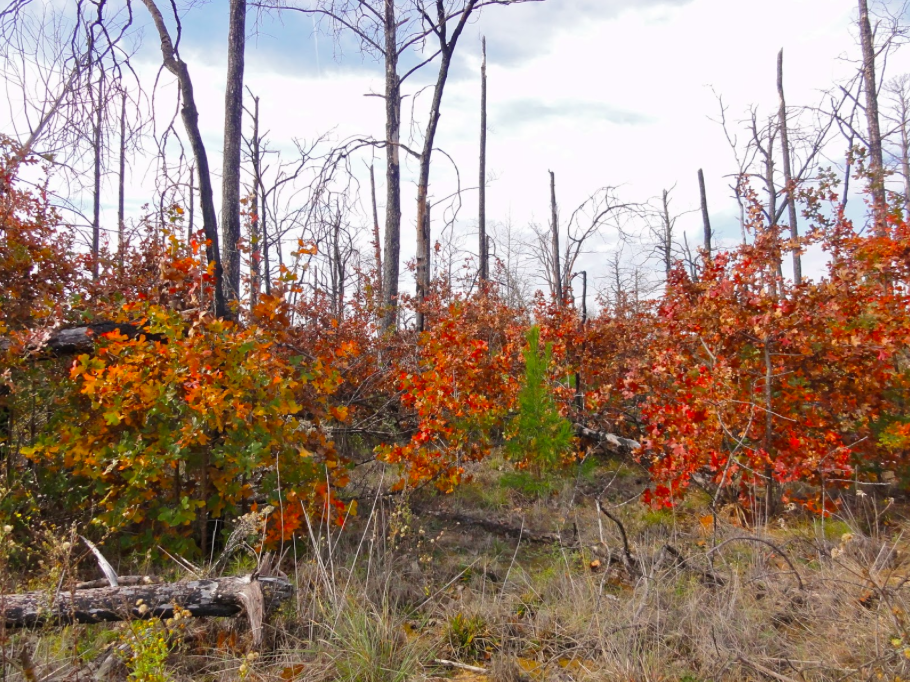
The park offers a good variety of distances and difficulties when it comes to hiking. We tackled a roughly two-mile loop, which included rest and play stops at a boggy pond and a sandstone rock outcropping. If you have older kiddos who might like to hike ahead of the group, be sure to instruct them to stop at forks in the trail. Many of the trails split and my seven year-old went one way while the rest of us went another. We found him without much difficulty (he did have the sense to stop eventually) but a quick chat ahead of time would’ve saved us all the trouble. In addition to hiking, Bastrop State Park offers camping (tent sites and historic cabins), fishing, canoe rentals, swimming (pool open May-September), golfing, interpretive programs, and a scenic drive.
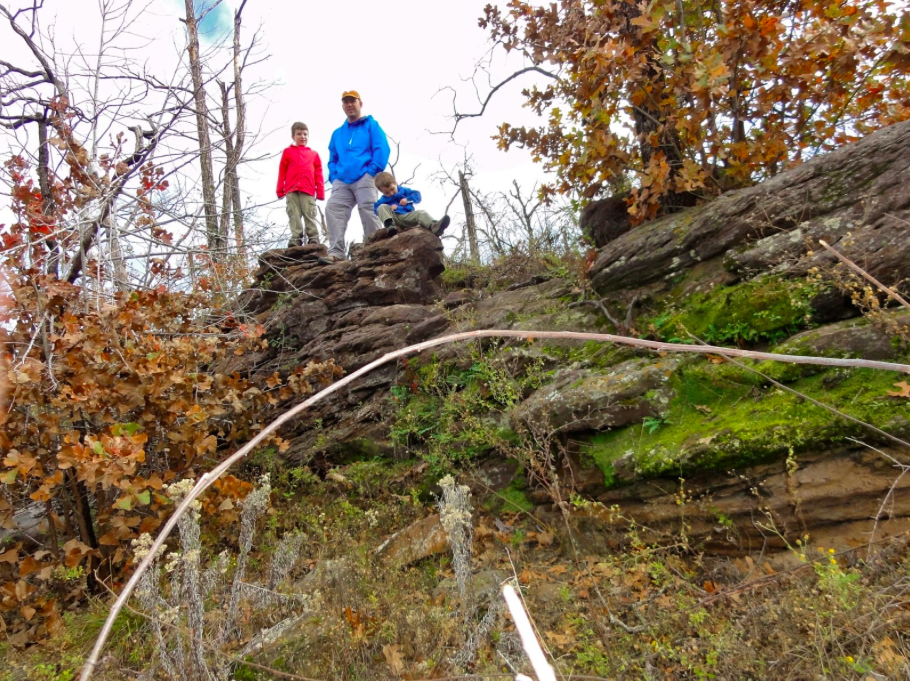
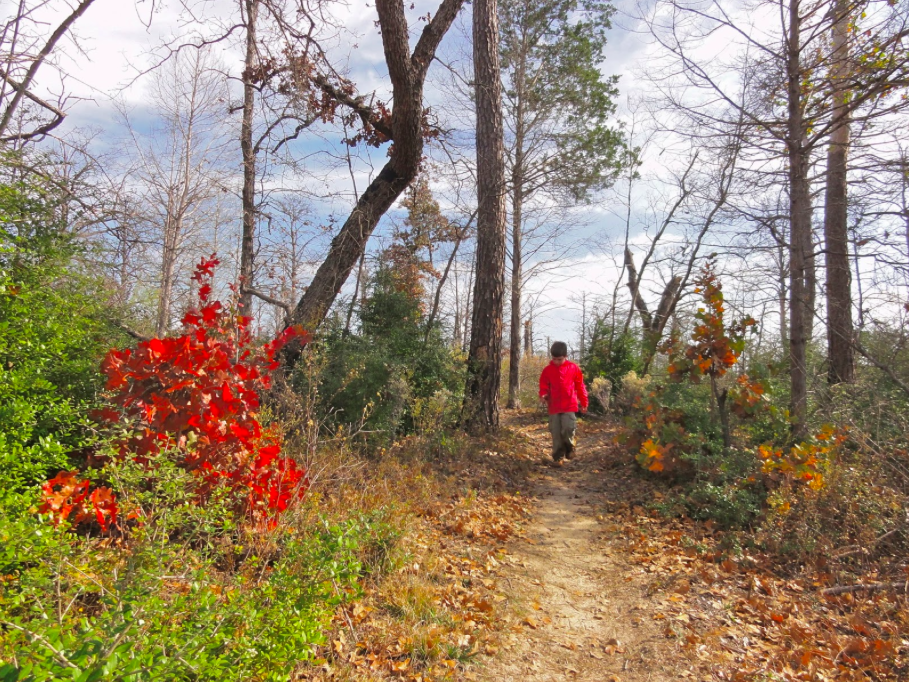
While there’s no denying that the fire was devastating, it has provided us–and our children–a unique opportunity to watch the rebirth of an ecosystem firsthand. Each time you visit Bastrop State Park during the decades to come, something will be new and different. How amazing is that?!? Texas Parks & Wildlife Department estimates that it will take a generation or more for Bastrop to recover from the 2011 fire. Nature is taking care of some of this recovery on its own, but humans are helping the process too. Replanting of Loblolly Pine seedlings began in the park in January of 2013 and you can be a part of the ongoing replanting efforts. TPWD is accepting volunteers (ages 8+) for its February public workday. Find details and register here. Additionally, TreeFolks is accepting volunteers for two January planting efforts on private property in Bastrop County. Find details and register here.
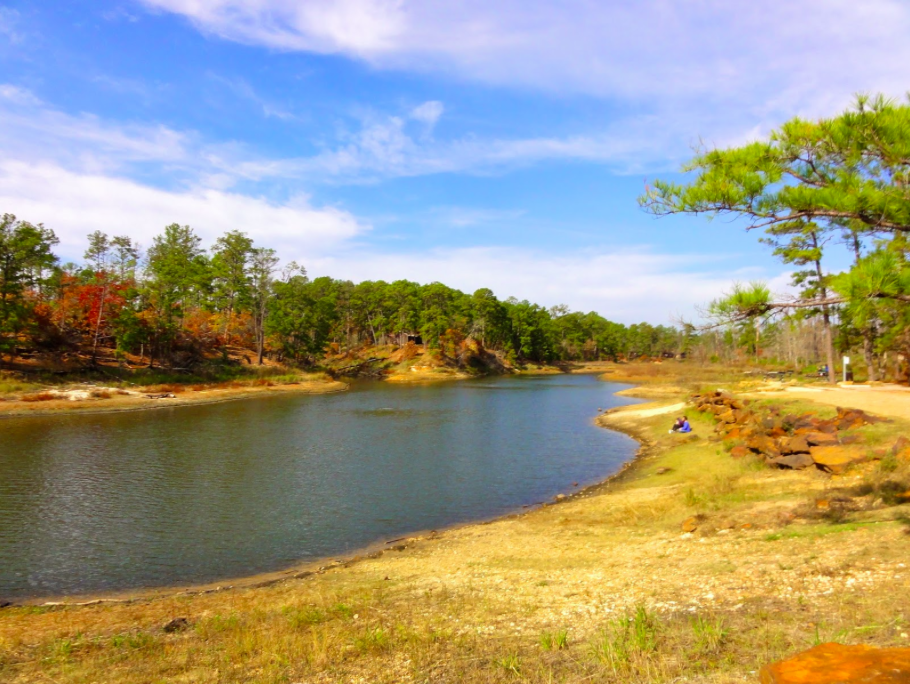
Bastrop State Park
100 Park Road 1A
Bastrop, TX 78602
Additional information:
- Entrance fees: Adults $4; Children 12 & under are FREE!
- Park map.
- Periodic prescribed burns will be taking place through the end of December to clear out dead fuel and prepare areas for replanting. These fires will not cause park closures.
- Curious how the seeds are harvested and the seedlings grown for replanting? Learn more here.
- Watch a UT Fire Ecologist discuss her research on the park’s recovery here.



